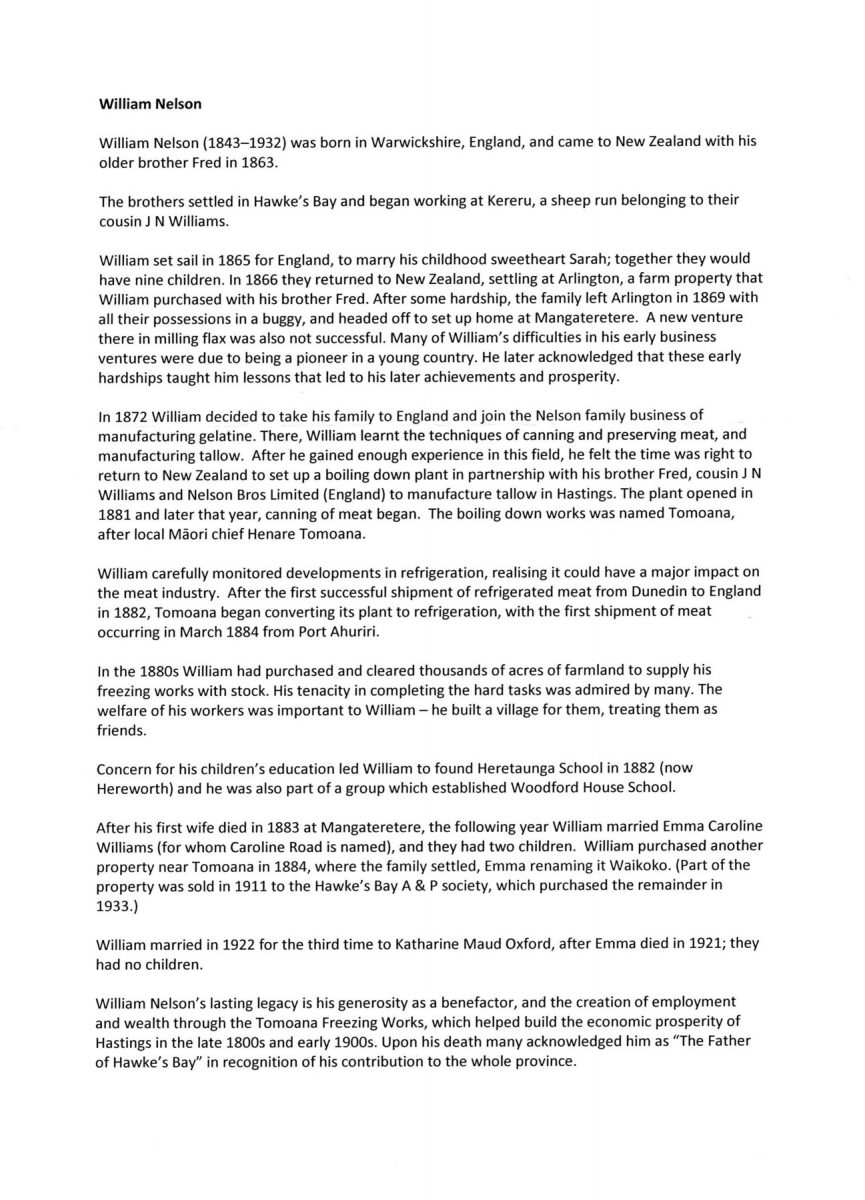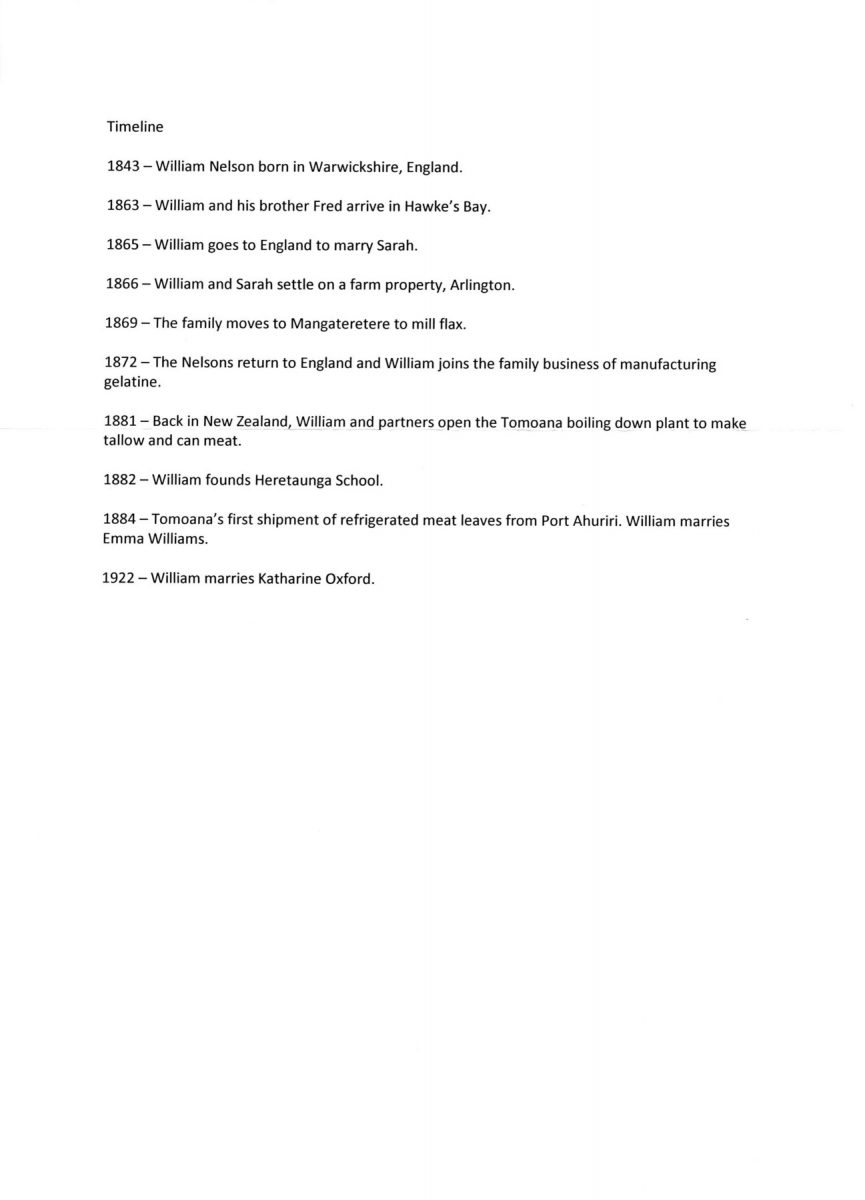William Nelson
William Nelson (1843-1932) was born in Warwickshire, England, and came to New Zealand with his older brother Fred in 1863.
The brothers settled in Hawke’s Bay and began working at Kereru, a sheep run belonging to their cousin J N Williams.
William set sail in 1865 for England, to marry his childhood sweetheart Sarah; together they would have nine children. In 1866 they returned to New Zealand, settling at Arlington, a farm property that William purchased with his brother Fred. After some hardship, the family left Arlington in 1869 with all their possessions in a buggy, and headed off to set up home at Mangateretere. A new venture there in milling flax was also not successful. Many of William’s difficulties in his early business ventures were due to being a pioneer in a young country. He later acknowledged that these early hardships taught him lessons that led to his later achievements and prosperity.
In 1872 William decided to take his family to England and join the Nelson family business of manufacturing gelatine. There, William learnt the techniques of canning and preserving meat, and manufacturing tallow. After he gained enough experience in this field, he felt the time was right to return to New Zealand to set up a boiling down plant in partnership with his brother Fred, cousin J N Williams and Nelson Bros Limited (England) to manufacture tallow in Hastings. The plant opened in 1881 and later that year, canning of meat began. The boiling down works was named Tomoana, after local Maori chief Henare Tomoana.
William carefully monitored developments in refrigeration, realising it could have a major impact on the meat industry. After the first successful shipment of refrigerated meat from Dunedin to England in 1882, Tomoana began converting its plant to refrigeration, with the first shipment of meat occurring in March 1884 from Port Ahuriri.
In the 1880s William had purchased and cleared thousands of acres of farmland to supply his freezing works with stock. His tenacity in completing the hard tasks was admired by many. The welfare of his workers was important to William – he built a village for them, treating them as friends.
Concern for his children’s education led William to found Heretaunga School in 1882 (now Hereworth) and he was also part of a group which established Woodford House School.
After his first wife died in 1883 at Mangateretere, the following year William married Emma Caroline Williams (for whom Caroline Road is named), and they had two children. William purchased another property near Tomoana in 1884, where the family settled, Emma renaming it Waikoko. (Part of the property was sold in 1911 to the Hawke’s Bay A & P society, which purchased the remainder in 1933.)
William married in 1922 for the third time to Katharine Maud Oxford [Orford], after Emma died in 1921; they had no children.
William Nelson’s lasting legacy is his generosity as a benefactor, and the creation of employment and wealth through the Tomoana Freezing Works, which helped build the economic prosperity of Hastings in the late 1800s and early 1900s. Upon his death many acknowledged him as “The Father of Hawke’s Bay” in recognition of his contribution to the whole province.













Do you know something about this record?
Please note we cannot verify the accuracy of any information posted by the community.